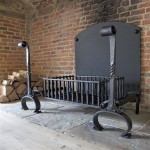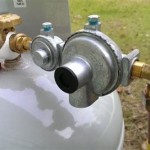Best Tile To Use For Fireplace Hearth
The fireplace hearth, acting as a non-combustible barrier between the firebox and the surrounding flooring, is a crucial safety feature. Choosing the right tile for this area involves considering both aesthetics and functionality. This article explores the various types of tile suitable for a fireplace hearth, detailing their characteristics, advantages, and disadvantages to assist in making an informed decision.
The primary function of the hearth is to protect the floor from sparks, embers, and radiant heat. The tile selected must be durable, heat-resistant, and non-combustible. Furthermore, it should complement the surrounding decor and fireplace design, contributing to the overall aesthetic appeal of the room.
Factors to Consider When Selecting Hearth Tile
Several crucial factors must be evaluated when choosing tile for a fireplace hearth. These considerations impact both the safety and the long-term performance of the hearth installation.
Heat Resistance: The tile's ability to withstand high temperatures without cracking or warping is paramount. Different materials have varying heat tolerances, and it’s essential to select a tile rated for the expected heat output of the fireplace. Fireplaces fueled by wood tend to generate higher temperatures than those powered by gas, influencing tile selection.
Durability and Maintenance: The hearth is a high-traffic area potentially exposed to ash, soot, and dropped logs. The tile should be durable enough to withstand the wear and tear associated with these conditions. Ease of cleaning is also a significant factor. Porous tiles require sealing to prevent staining, while non-porous options are generally easier to maintain.
Aesthetic Compatibility: Tile comes in a vast array of colors, patterns, and textures. The chosen tile should harmonize with the style of the fireplace and the overall design of the room. Consider the existing color palette, architectural style, and personal preferences when making a selection.
Cost and Installation: The cost of tile varies considerably depending on the material, size, and complexity of the design. Installation costs also need to be factored in. While some homeowners may opt for DIY installation, professional installation is often recommended, particularly for larger or more intricate hearth designs.
Popular Tile Materials for Fireplace Hearths
Several tile materials are frequently used for fireplace hearths, each offering unique benefits and drawbacks. Understanding these characteristics is crucial in selecting the most appropriate option.
Ceramic Tile: Ceramic tile is a popular and versatile choice for fireplace hearths. It's relatively inexpensive, readily available in a wide range of colors and styles, and easy to clean. However, standard ceramic tile may not be as heat-resistant as other options, particularly for wood-burning fireplaces. Porcelain tile, a type of ceramic tile fired at higher temperatures, offers improved heat resistance and durability.
Porcelain Tile: Due to its higher density and lower water absorption compared to standard ceramic, porcelain tile is a superior choice for fireplace hearths. It is more resistant to cracking and staining, making it suitable for both wood-burning and gas fireplaces. Porcelain tile mimics the appearance of natural stone, wood, and other materials, offering versatility in design.
Stone Tile: Natural stone tiles, such as granite, slate, marble, and travertine, offer a sophisticated and durable option for fireplace hearths. These materials are naturally heat-resistant and can withstand the demands of a fireplace environment. However, natural stone can be more expensive than ceramic or porcelain tile and may require sealing to prevent staining. Each type of stone has its own unique characteristics, impacting its suitability for different fireplace styles and needs.
Granite: Granite is a highly durable and heat-resistant natural stone. It is available in a variety of colors and patterns, making it a versatile choice for fireplace hearths. Granite is relatively non-porous, requiring less maintenance than other natural stone options.
Slate: Slate is a fine-grained, metamorphic rock known for its natural cleft finish and earthy tones. It is highly heat-resistant and durable, making it a suitable choice for both traditional and contemporary fireplace designs. Slate can be more porous than granite and may require sealing to protect it from staining.
Marble: Marble is a luxurious natural stone prized for its elegant veining and polished finish. While marble is heat-resistant, it is also more porous and susceptible to staining than granite or slate. Marble hearths require regular sealing and careful cleaning to maintain their appearance. Due to its higher maintenance requirements, marble is often better suited for gas fireplaces rather than wood-burning fireplaces.
Travertine: Travertine is a type of limestone characterized by its porous surface and earthy tones. It offers a rustic and natural look for fireplace hearths. Travertine requires sealing to prevent staining and is more susceptible to damage from acids and harsh cleaning agents. Like marble, travertine may be better suited for gas fireplaces due to its higher maintenance needs.
Glass Tile: While visually appealing, glass tile generally is not recommended for fireplace hearths, especially those used with wood-burning fireplaces. Standard glass is sensitive to thermal shock, and sudden changes in temperature can cause it to crack or shatter. Certain types of tempered or specialized heat-resistant glass tile may be suitable for decorative accents in very low-heat situations, but consulting with the manufacturer regarding its specific heat resistance is critical.
Metal Tile: Metal tile, such as copper or stainless steel, can offer a unique and contemporary look for fireplace hearths. Metal tiles are generally heat-resistant, but their suitability depends on the specific metal alloy and construction. Certain metal tiles may scratch or dent more easily than ceramic or stone tile. As with glass tile, it's crucial to verify the tile's heat resistance and suitability for fireplace applications with the manufacturer.
Installation Considerations for Hearth Tile
Proper installation is critical to ensuring the safety and longevity of a tiled fireplace hearth. Adhering to best practices and consulting with a qualified installer are highly recommended.
Substrate Preparation: The substrate beneath the tile must be clean, level, and structurally sound. Concrete slabs are commonly used as a substrate, but cement board can also be used over wood framing. Proper preparation ensures that the tile adheres properly and prevents cracking or shifting over time.
Mortar Selection: Choosing the correct mortar is crucial for heat resistance and adhesion. A modified thin-set mortar designed for high-temperature applications is generally recommended. Follow the manufacturer's instructions for mixing and application. Utilizing the wrong mortar could lead to tile failure and compromise the safety of the hearth.
Grouting: The grout fills the spaces between the tiles and prevents moisture and debris from penetrating the hearth. Choose a grout specifically designed for tile and consider adding a sealant to protect it from staining. Epoxy grout is a more durable and stain-resistant option, suitable for high-traffic areas like fireplace hearths.
Expansion Joints: Expansion joints are essential to accommodate the expansion and contraction of the tile due to temperature fluctuations. These joints should be placed strategically, particularly around the perimeter of the hearth and in large tiled areas. Failure to include expansion joints can lead to cracking or buckling of the tile.
Safety Precautions
Working with heat-generating appliances like fireplaces necessitates adhering to strict safety protocols. The installation and use of the hearth should always prioritize safety to prevent potential hazards.
Non-Combustible Materials: Ensure all materials used in the hearth construction, including the tile, mortar, and grout, are rated as non-combustible. Combustible materials placed too close to the firebox can pose a serious fire hazard.
Clearances: Maintain appropriate clearances between the fireplace and any combustible materials, such as walls, mantels, and furniture. Refer to local building codes and the fireplace manufacturer's specifications for recommended clearances.
Regular Inspections: Regularly inspect the fireplace and hearth for any signs of damage, such as cracks, loose tiles, or crumbling mortar. Address any issues promptly to prevent more significant problems and maintain the safety of the fireplace.
Professional Consultation: When in doubt, consult with a qualified fireplace installer or contractor. They can provide expert advice on tile selection, installation, and safety considerations.
Selecting the best tile for a fireplace hearth requires careful consideration of several factors, including heat resistance, durability, aesthetic compatibility, and cost. By understanding the characteristics of different tile materials and following proper installation practices, homeowners can create a safe and attractive hearth that complements their fireplace and enhances the overall ambiance of their living space. Consulting with professionals and adhering to safety guidelines is essential to ensuring a functional and visually appealing fireplace hearth for years to come.

What Are The Best Tiles For A Fireplace Rotherham Centre

Choosing The Best Tiles For Your Fireplace
/102661017-6a23c040b71843379188b96b21ac1a08.jpg?strip=all)
How To Tile A Fireplace

Fireplace Tile Ideas Designs To Inspire You

10 Stylish Tile Options For Your Fireplace Surround

Fireplace Tiles Classique Floors Tile Portland Or

Remodeling A Fireplace With Tile

Fireplace Tiles Classique Floors Tile Portland Or

Fireplace Tiles Ideas And Patterns Rubi Blog Usa

Fireplace Tiles Complete Guide On What Can Be Used And Where








